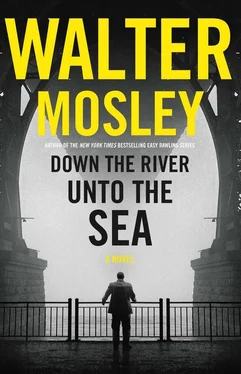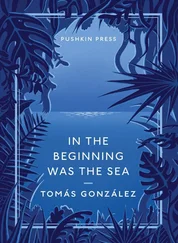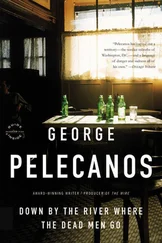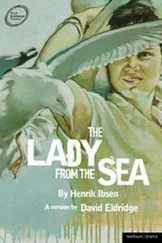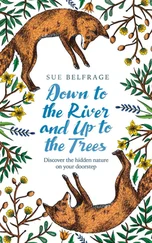My entire apartment is one big room and a water closet. I have a footed, deep-basin iron bathtub, a king-size bed on a three-foot-high dais, and a mahogany desk that’s more than a hundred years old.
Leaving the rest of the room dark, I turned on the desk lamp and opened the suitcase full of records that Willa Portman brought.
Either Willa or her boss was very organized. A blue folder set atop the great pile of paper was an index that pretty much laid out the defense for A Free Man, née Leonard Compton. It contained his personal history, his political involvements, his work and military experience, and the events leading up to the night that Officers Valence and Pratt were killed.
Laid upon the table of contents page of the blue folder was a three-by-five photograph of a smiling middle-aged black woman. The smile revealed a golden upper front tooth, and the eyes told of intelligence and certainty. Etched in red along the bottom of the photograph was the name: JOHANNA MUDD. Willa Portman, I was sure, had placed that picture there because the disappearance of Ms. Mudd was the reason for the investigation.
When he was still Leonard Compton, Man served as a master sergeant in the rangers. He’d received high scores as a marksman and had won many medals, at least hinting at his bravery and nationalism. When he left the armed forces he went to City College and then became a high school teacher in Upper Manhattan, where he worked hard to keep his charges, boys and girls, out of trouble.
Leonard wrote articles for a small uptown paper called the People’s Clarion. He started out writing about his military experience, but as time passed he began to detail crimes done to young people in and around the black neighborhoods of New York City.
At some point along the way he joined, or maybe started, a group called the Blood Brothers of Broadway. This group consisted of five men and two women.
Tanya Lark had been one of Man’s success stories. She was a gangbanging killer who scared everybody she met until he showed her that anger and violence could be redirected to help the community.
Greg Lowman was a security guard for Trickster Enterprises, a toy company that had diversified (according to Braun’s sources) into various technological concerns. Lowman was a black member of the NRA and a solid believer in every American’s right to defend him- or herself.
Christopher “Kit” Carson had done six stints in jail, mostly for burglary. One of these was due to an arrest that Pratt had made.
Son Mali was an Africanist who believed that one day a revolution would tear the United States apart. His day job was that of a master plumber.
Lamont Charles was the slickest member of the Blood Brothers of Broadway. He was a suspected con man who had never been charged, a Lothario of almost mythic proportions, and a poker player so devastating that he was allowed in only certain professional games from Atlantic City to Las Vegas.
Lana Ruiz was a Dominican who had cut the throat of her pimp in his sleep but somehow managed to get a judge to call it self-defense. Her picture was that of a beautiful dark-skinned woman who seemed defiant even while smiling for the photograph.
The BBB was not a fortunate lot. Lowman, Carson, and Mali had all been murdered in the eighteen months preceding Man’s shoot-out with Pratt and Valence. Lamont Charles had been shot but he survived; a triplegic living in a nursing home on Coney Island.
Lana Ruiz had been convicted of armed assault and attempted murder, while Tanya Lark had dropped off the map completely.
That was a whole lot of mayhem even for a militant political group, even for a Saturday night in summertime in Brownsville, New York.
There was a long list of witnesses who had claimed that the dead cops were involved in criminal activities and two witnesses who at first claimed that the cops opened fire on Man (they gave nearly identical testimony), only to recant within three days of each other.
Even though Braun hadn’t mentioned it in his arguments, I couldn’t see why the former Leonard Compton would decide to take on the cops in a one-on-two shoot-out. He was a marksman and they trained professionals. Why not set himself up on some roof and take them out when they were on a job?
And why drop a case just because the client might have been guilty? It was the lawyer’s job to work with the law, not worry about right and wrong.
I must have read four hundred pages when I noticed that it was closing in on 5:00 a.m. I should have gone to bed, but all that evidence gave me a thought: If Adamo Cortez wasn’t actually the name of an NYPD cop, then maybe it was an official alias or a confidential informant.
It was at that moment I knew I was going to take both cases: my frame and A Free Man’s murder conviction.
I was born to be an investigator. For me it was like putting together a three-dimensional, naturalistic puzzle that in the end would be an exact representation of the real world.
From the deep bottom drawer of my ancient desk I took out two reams of paper, both pastel colored — one blue and the other pink. That way my outline of the two investigations could be stacked together while following two different strands. I had, in my failed career, used as many as five colors to keep my place.
I’d been paid two hundred fifty dollars to work an eight-hour day seeing if the two investigations made sense. I had a clear pathway because nobody knew what I was up to.
For the first step I took a white sheet from the top drawer and penned across the top COMMON ELEMENTS.
The first question shared by both cases was whether or not I needed a partner in the process.
I considered Gladstone Palmer. He was my friend; there was no doubt about that. He went into Rikers and made sure that I was safe in solitary. When I was working a seventy-hour week at two security jobs he lent me the money to start the detective service, then sent me my first few clients. And Glad knew how the department worked. He was connected to every precinct, every captain, and most foot soldiers of the NYPD. His input would be invaluable and... if he was able to clear my name, he might also clear a pathway to his own advancement.
But Glad’s strengths were also deficits. He did know all the important players on, and off, the force and so might be beholden to people I’d have to hurt. Add to that the fact that I was trying to clear a cop killer of the crimes he was accused of while admitting that he pulled the trigger... that would be of no help to my friend.
Patrolman First Class Henri Tourneau was another choice. The young Haitian-born cop’s father asked me to help him prepare for getting on the force. I guided Henri through every step, including training himself in computers so that he’d have a skill that most prospective cops lacked. Once he was in I counseled him on how to deal with everything from his captain to the rank and file. I told him what rules could be bent or broken and those that were sacrosanct.
One thing he was never to do was admit that I was anything other than a friend of his father’s.
Henri allowed me to roam through the general databases, but using him as a partner in these investigations was above and beyond for the young and recently married policeman.
No other cop fit the bill, and so I let my thoughts range wider. There were half a dozen PIs I knew from work I’d done over the years. But I wasn’t close enough to any of them to feel they could be trusted with issues so serious.
The sun was beginning to peek over the bank building across the street when I thought, reluctantly, of Melquarth Frost. Melquarth, or Mel as he was better known, was a vicious criminal.
Mel had done many things wrong in his life. He’d robbed banks, murdered rivals, tortured marks, set bombs, and belonged to a few dangerous heist crews that had executed some of the most daring robberies of the twenty-first century so far.
Читать дальше
